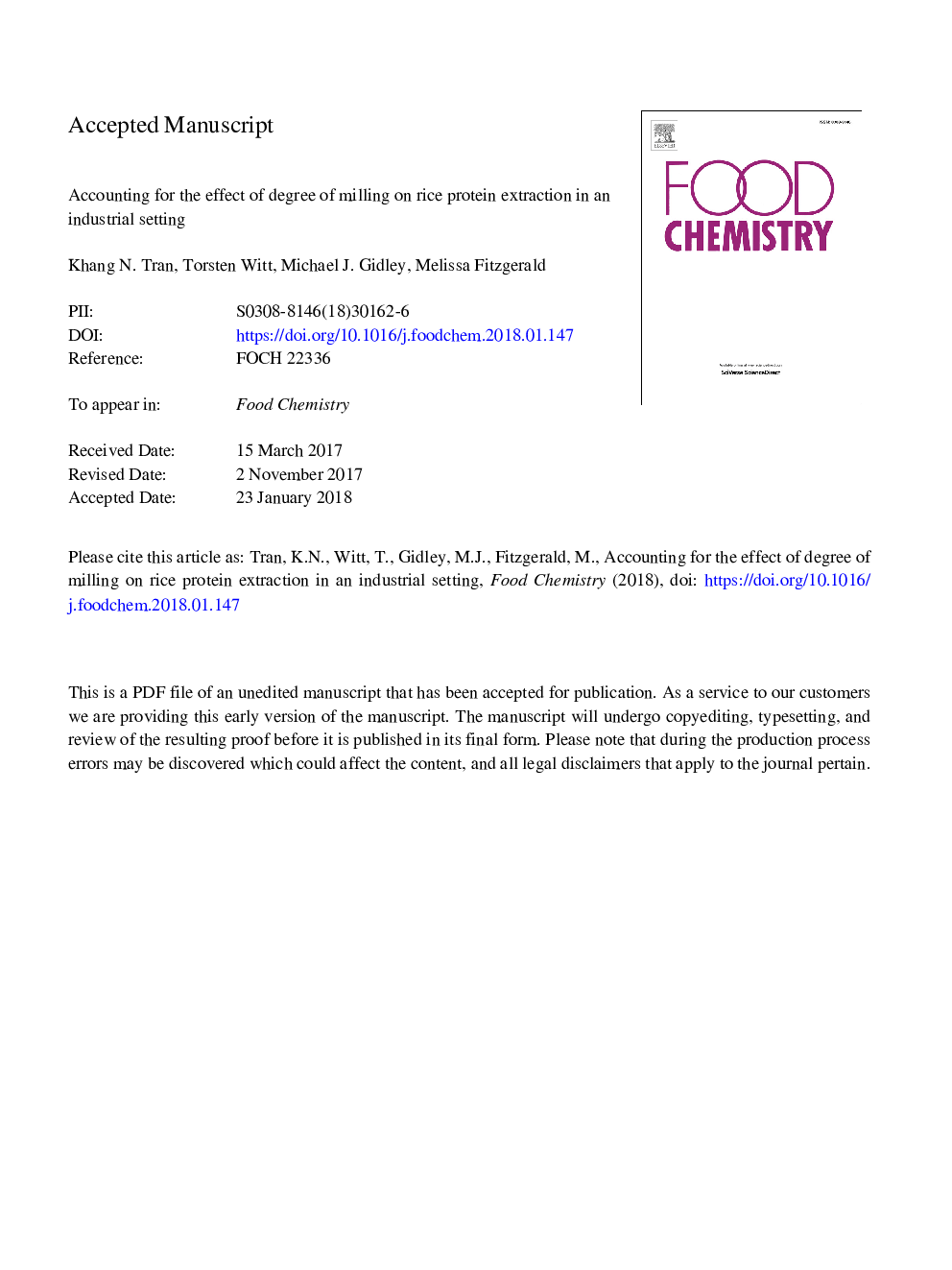| Article ID | Journal | Published Year | Pages | File Type |
|---|---|---|---|---|
| 7585610 | Food Chemistry | 2018 | 21 Pages |
Abstract
The by-products of rice milling (BRM), which are predominately rice bran, are a potential source of soluble protein that has been underexploited due to difficulties in extraction. Significant advances have been made understanding how protein content changes with degree of milling (DOM) at the laboratory scale. However, these results cannot be compared due to the lack of information on how DOM affects protein extractability in industrially produced BRM. The colorimetry or particle size analysis may estimate milling degree in industrial scale, and protein extractability changes due to a series of abrasive milling passes. Both colorimetry and particle size could differentiate the industrial abrasive passes and correlated with the amount of bran/protein present. Both the 1st and 2nd pass of milling were suitable sources for the extraction. While the relative amount of protein extracted in each fraction changed, the protein profile of the major fractions was conserved between mill passes.
Related Topics
Physical Sciences and Engineering
Chemistry
Analytical Chemistry
Authors
Khang N. Tran, Torsten Witt, Michael J. Gidley, Melissa Fitzgerald,
